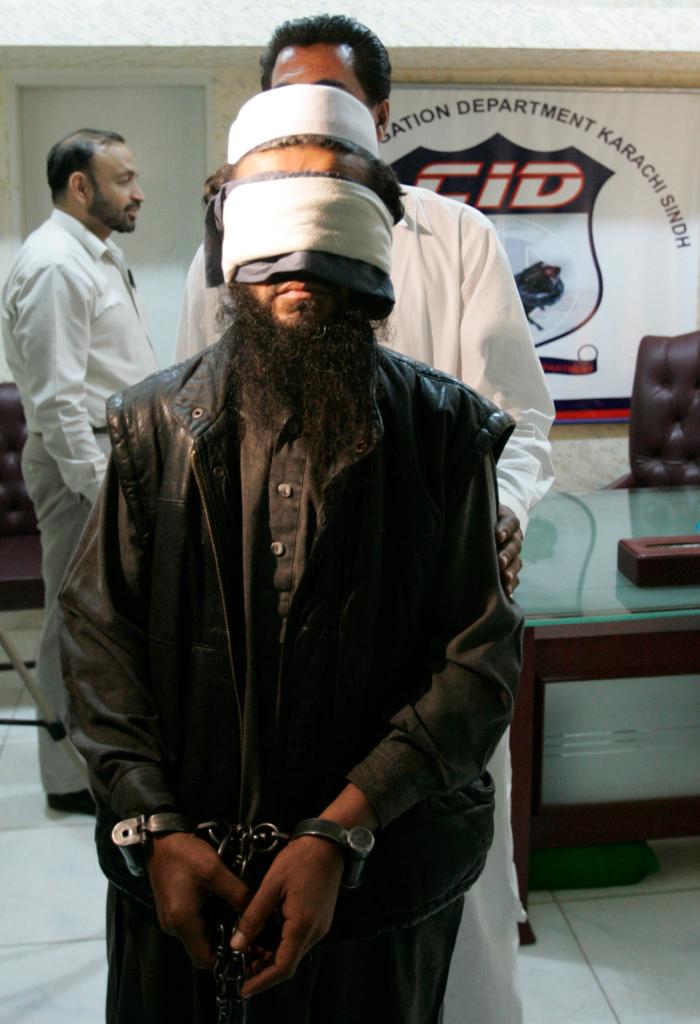Vice President Joe Biden sometimes speaks in hyperbole, but the evidence suggests he basically had it right when he crowed on NBC’s ”Meet the Press” last Sunday: ”There has never been as much emphasis and resources brought against al-Qaida. The success rate exceeds anything that occurred in the last administration.”
The latest achievement in this counterterror campaign was the capture in late January of Mullah Abdul Ghani Baradar, the No. 2 official of the Afghan Taliban. The raid in Karachi was conducted jointly by the CIA and Pakistan’s Inter-Services Intelligence agency, which both kept the lid on the operation for more than two weeks, until it was disclosed Monday by The New York Times.
”We had ‘no kidding’ information that he was at this location,” explained a U.S. counterterrorism official. ”That made it easier for the ISI to roll in.” Baradar is now in Pakistani custody and, according to the U.S. official, ”he is providing intelligence.”
The Karachi raid is part of a broad offensive that has sometimes been overlooked in the partisan squabbles over whether the Obama administration should be giving Miranda warnings to terrorist suspects.
”The real action has been pounding the hell out of al-Qaida and its allies around the world,” the official argued.
The numbers show a sharp upsurge in operations against al-Qaida and its allies in Pakistan since Barack Obama took office. According to the U.S. official, there were 55 Predator drone strikes last year in the Pakistani tribal areas. That’s nearly double the peak level during the Bush years, which reached the mid-30s in 2008.
 The pace of Predator attacks has increased further this year. Since Jan. 1, there have been more than a dozen operations. If that rate continues, the total number of attacks this year could roughly double again to more than 100.
These raids have ravaged the top tier of al-Qaida’s lieutenants. The victims include Saleh al-Somali, the chief of external operations, who was killed Dec. 8; Abdullah Said al-Libi, the chief of operations in Pakistan, who was killed Dec. 17, and Tahir Yuldashev, the leader of the Islamic Movement of Uzbekistan, who was killed last August.
All told, according to U.S. officials, since the beginning of 2009, the drone attacks have killed ”several hundred” named militants from al-Qaida and its allies, more than in all previous years combined. The drones have also shattered the leadership of the Pakistani Taliban, which has been waging a terror campaign across that country.
On a typical day, there are roughly a half-dozen Predators in the air over the tribal areas of western Pakistan, looking for targets, sources say. This intensive coverage is possible because the Obama CIA requested more resources for the drone attacks last March, during the initial review of Afghanistan-Pakistan policy. By the end of this year, the number of drones available will have increased by about 40 percent since early 2009.
The CIA’s human intelligence that feeds the drone attacks has increased as well. Some of these agents are run jointly with other intelligence services, but a growing number are ”unilateral” CIA recruits.
These assets are run from agency bases in Afghanistan, such as the facility at Khost that was attacked on Dec. 30, and in Pakistan.
”The degree of trust and confidence that the Pakistani government and military have toward the U.S. is changing in a favorable way,” said Gen. Jim Jones, the national security adviser, who returned Friday from a three-day visit to Pakistan. He said he was impressed that Pakistan was now willing to go after a wider array of targets.
Although the Pakistani government publicly complains about the drone attacks, they privately endorse the strategy under rules negotiated in mid-2008. This agreement permits the CIA to fire when it has solid intelligence, and provide ”concurrent notification” to Pakistan, which typically means shortly after a Hellfire missile is launched.
Al-Qaida and its allies are indeed ”on the run,” as Biden said last Sunday. But it was a stretch for him to claim that it’s not likely they can mount another Sept. 11 attack. How does he know? If we’ve learned anything over the past nine years, it’s that this is a resilient, adaptable enemy.
The fact that it is fragmented doesn’t mean that it can’t still mount deadly attacks.
But surely the country can agree, looking at the evidence, that Obama has been no slouch in pursuing what he said in his inaugural address was a ”war against a far-reaching network of violence and hatred.”
David Ignatius writes about foreign affairs for The Washington Post. He can be contacted at:
davidignatius@washpost.com
Copy the Story LinkSend questions/comments to the editors.



Success. Please wait for the page to reload. If the page does not reload within 5 seconds, please refresh the page.
Enter your email and password to access comments.
Hi, to comment on stories you must . This profile is in addition to your subscription and website login.
Already have a commenting profile? .
Invalid username/password.
Please check your email to confirm and complete your registration.
Only subscribers are eligible to post comments. Please subscribe or login first for digital access. Here’s why.
Use the form below to reset your password. When you've submitted your account email, we will send an email with a reset code.